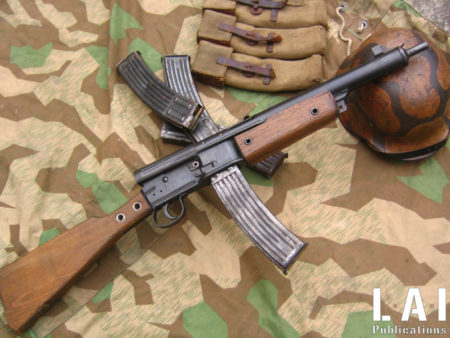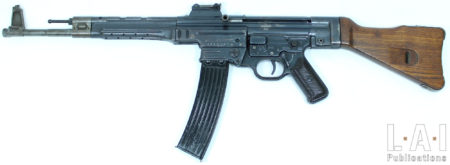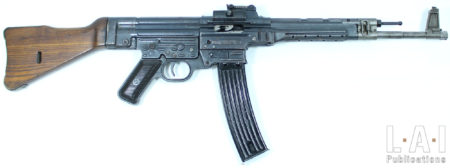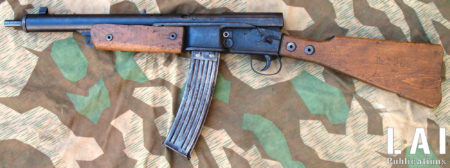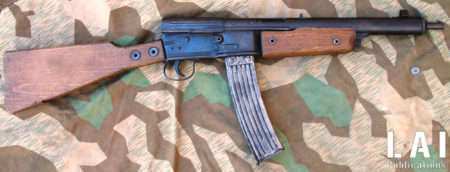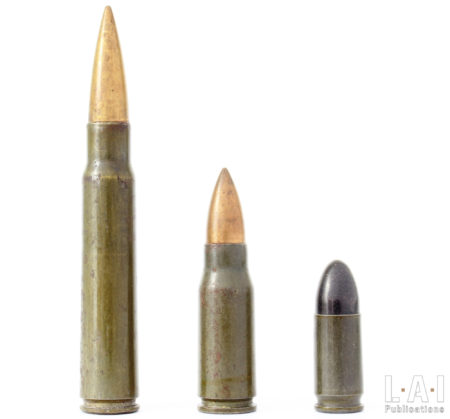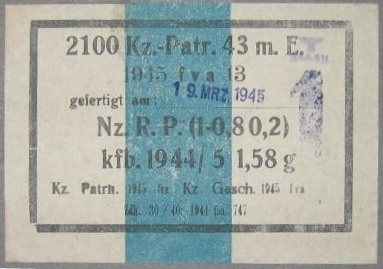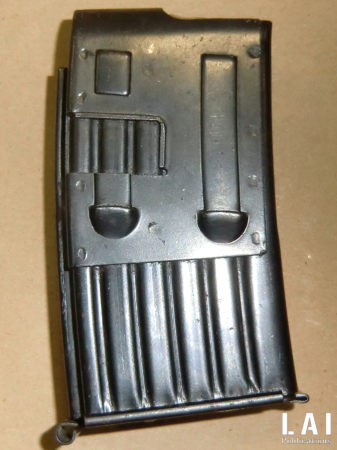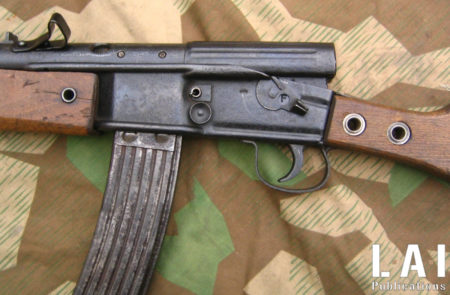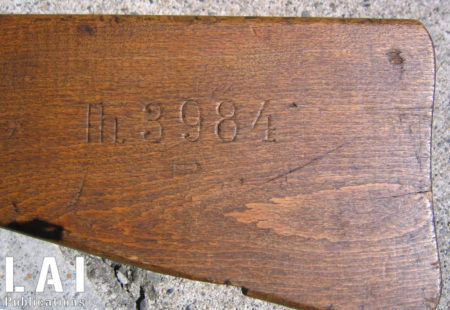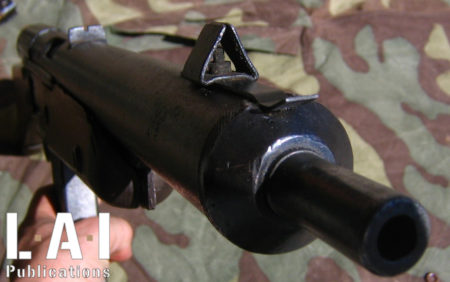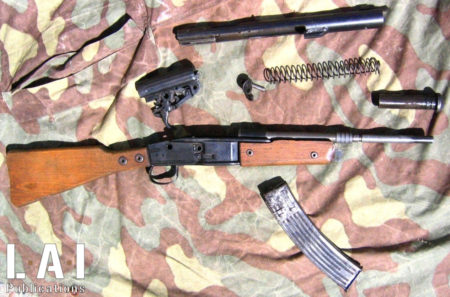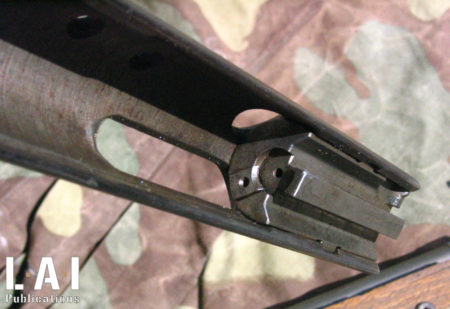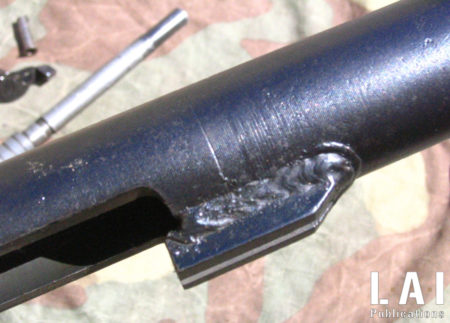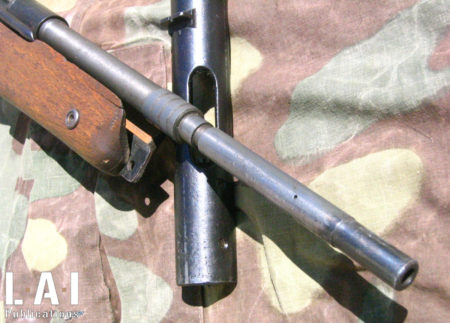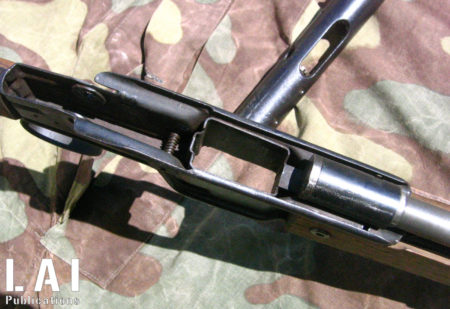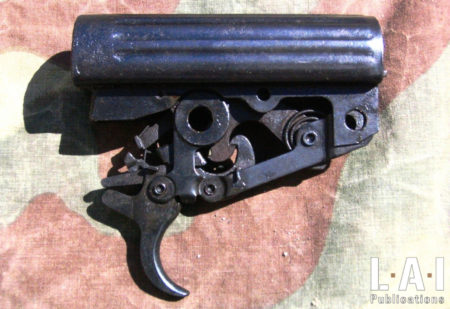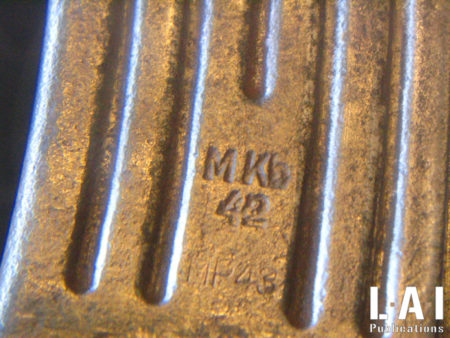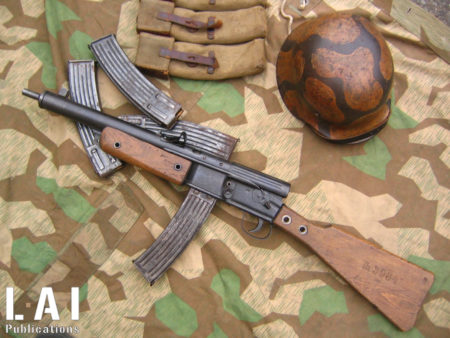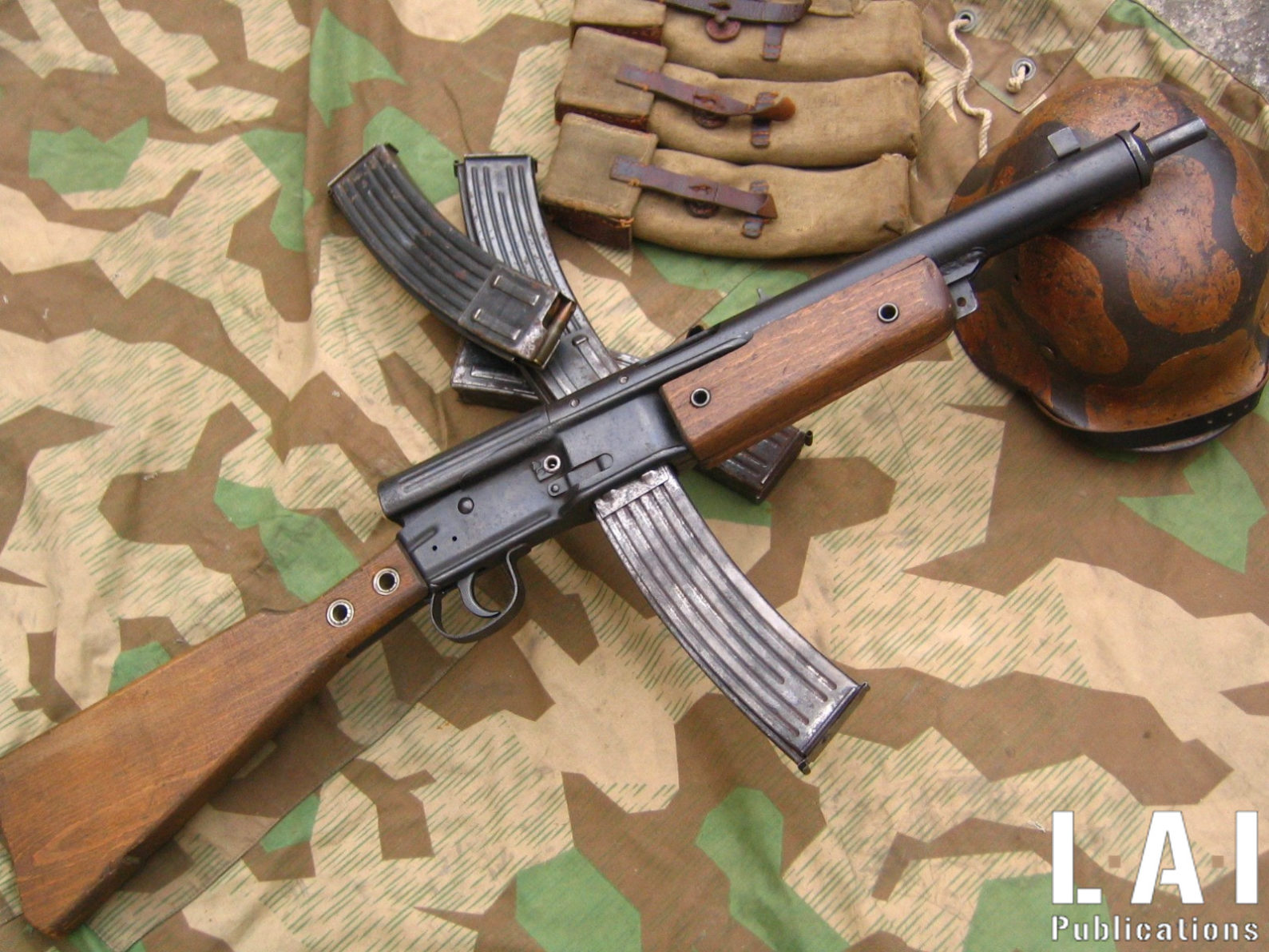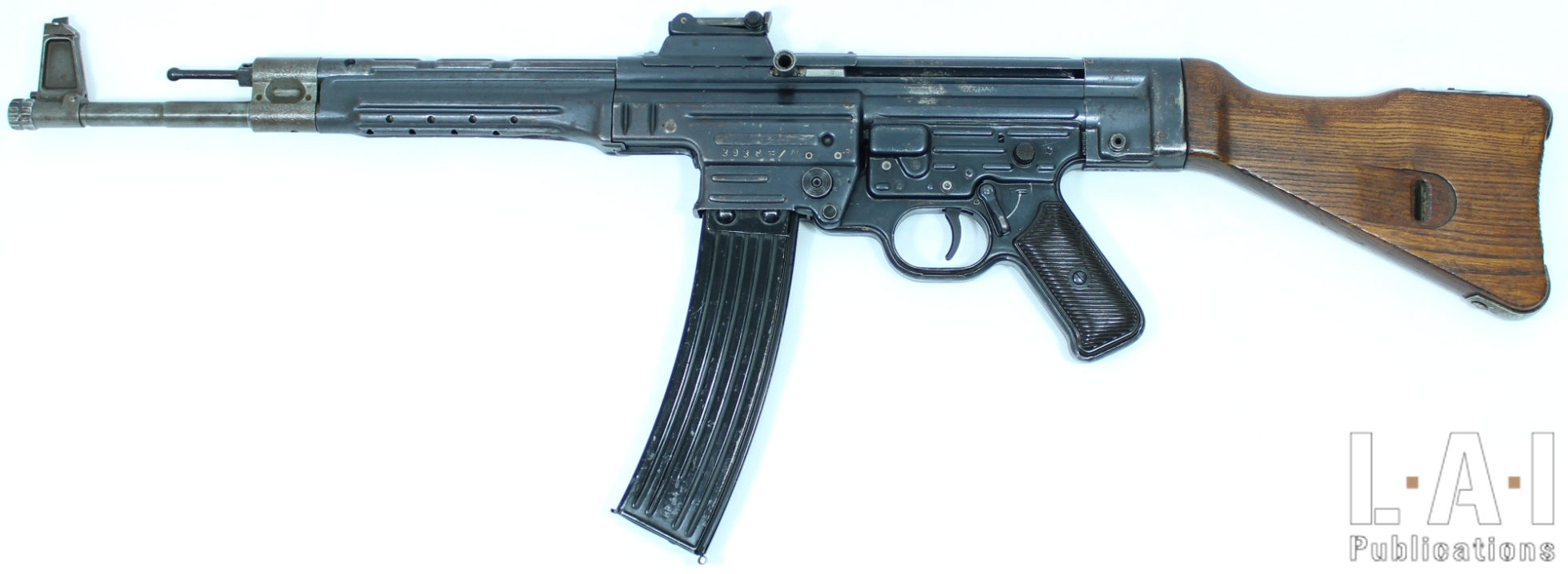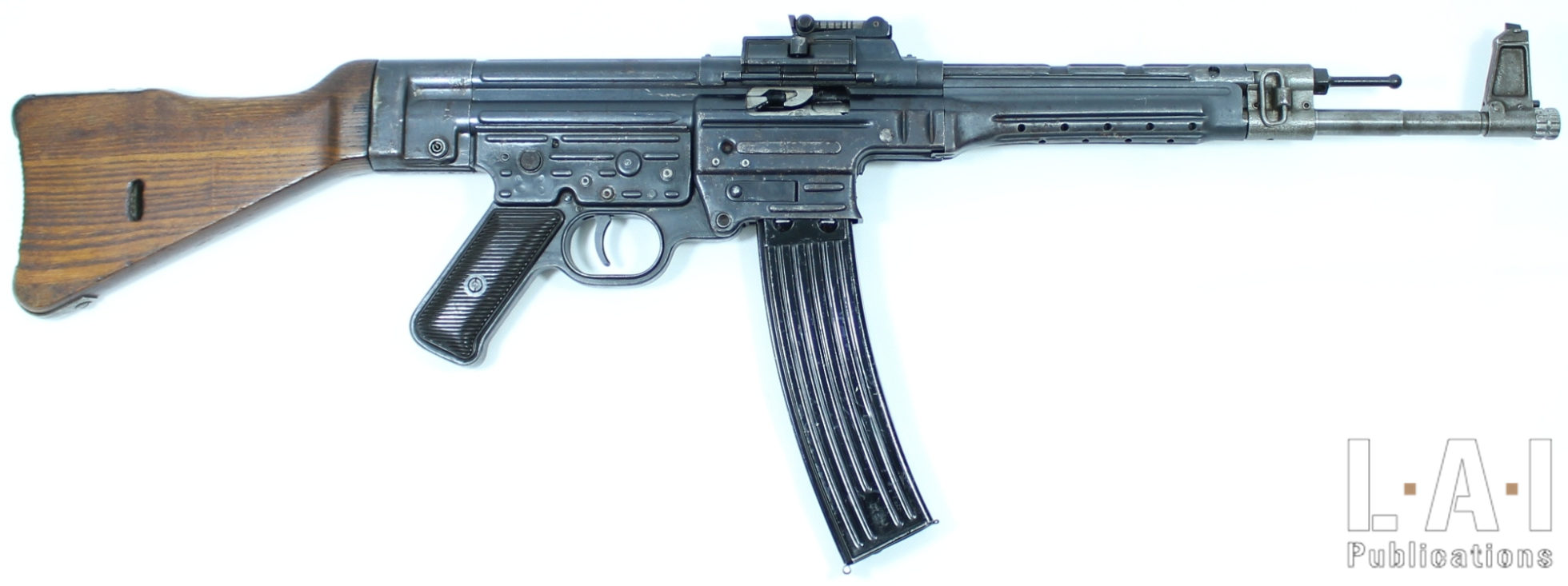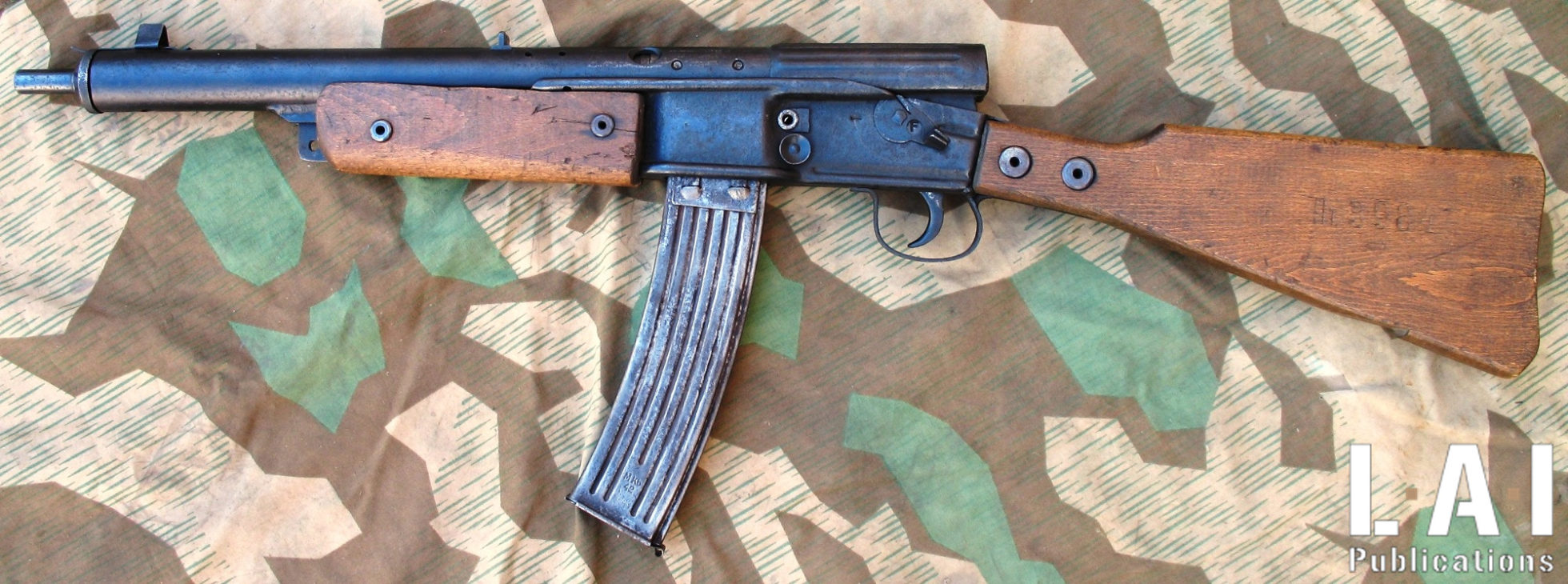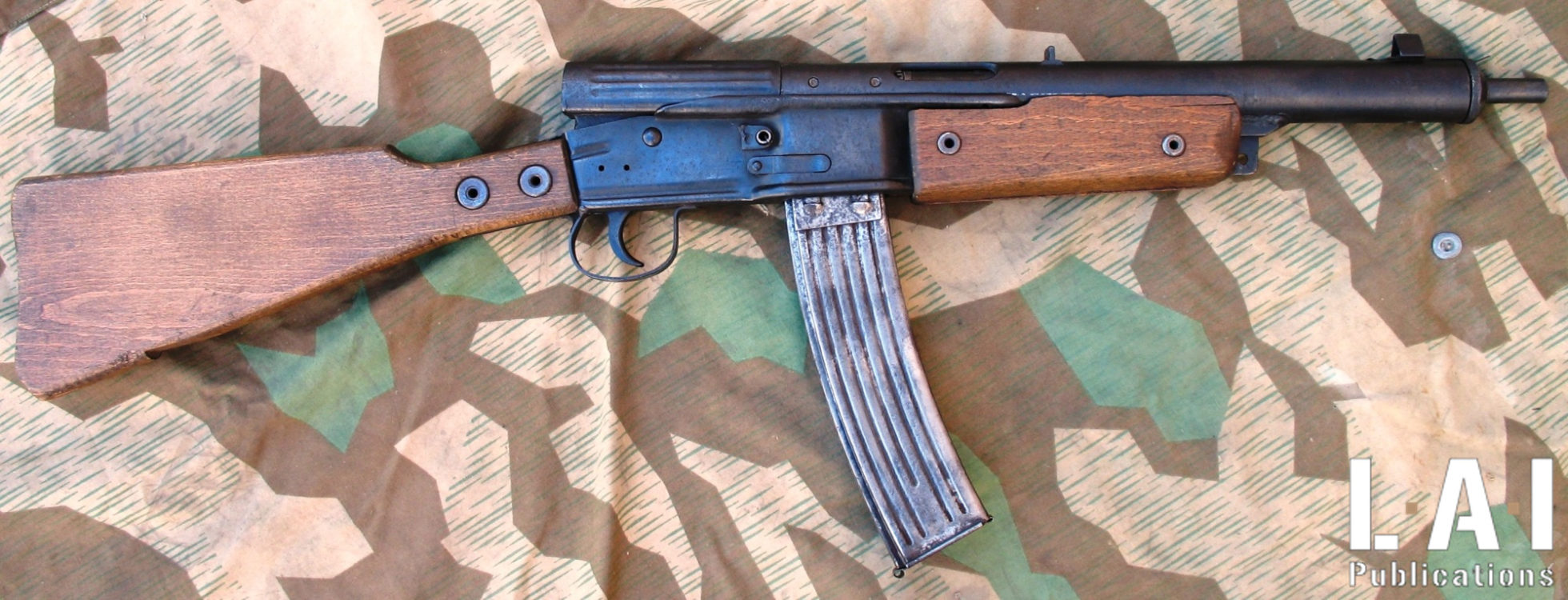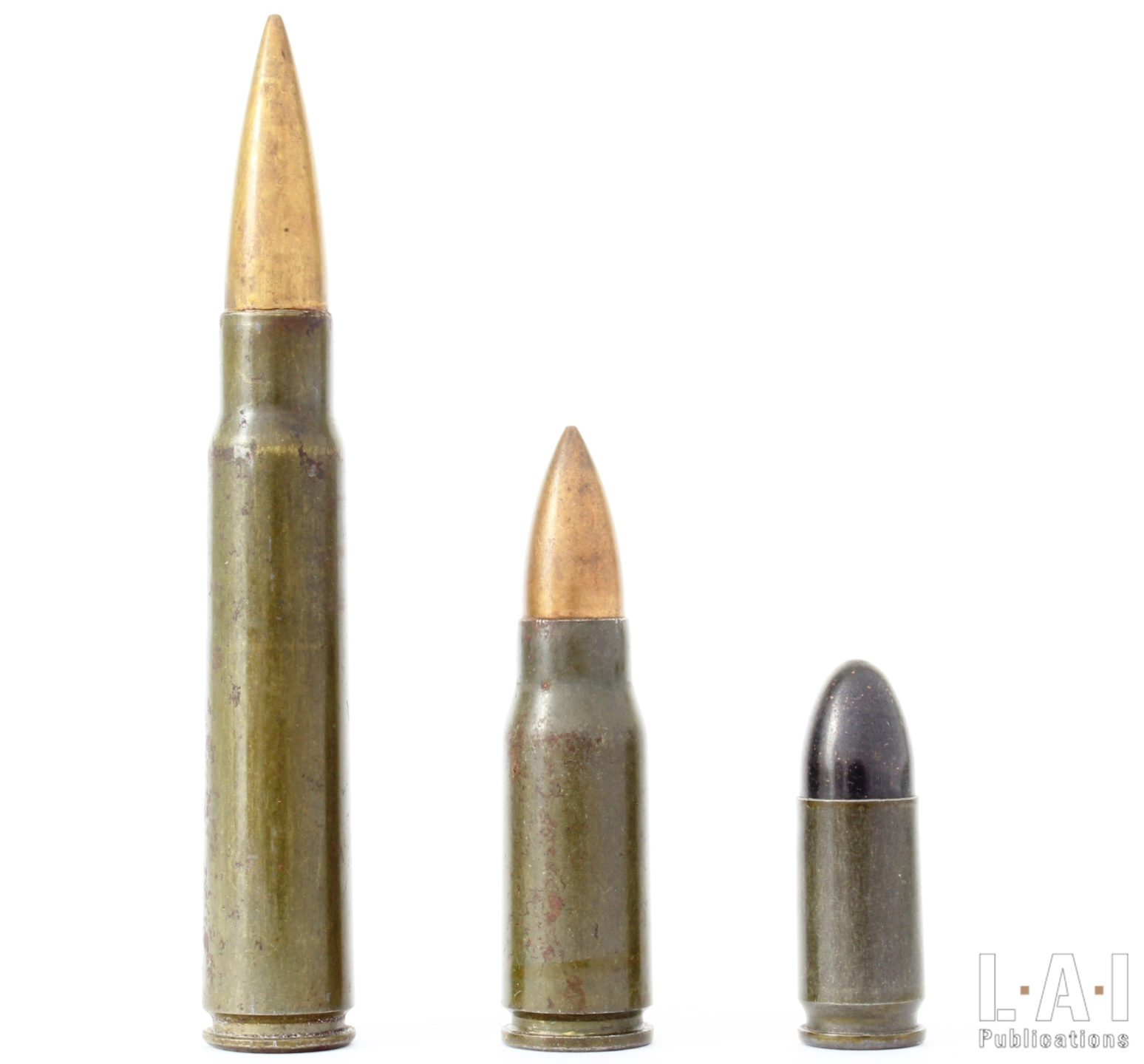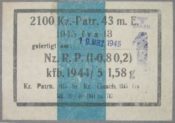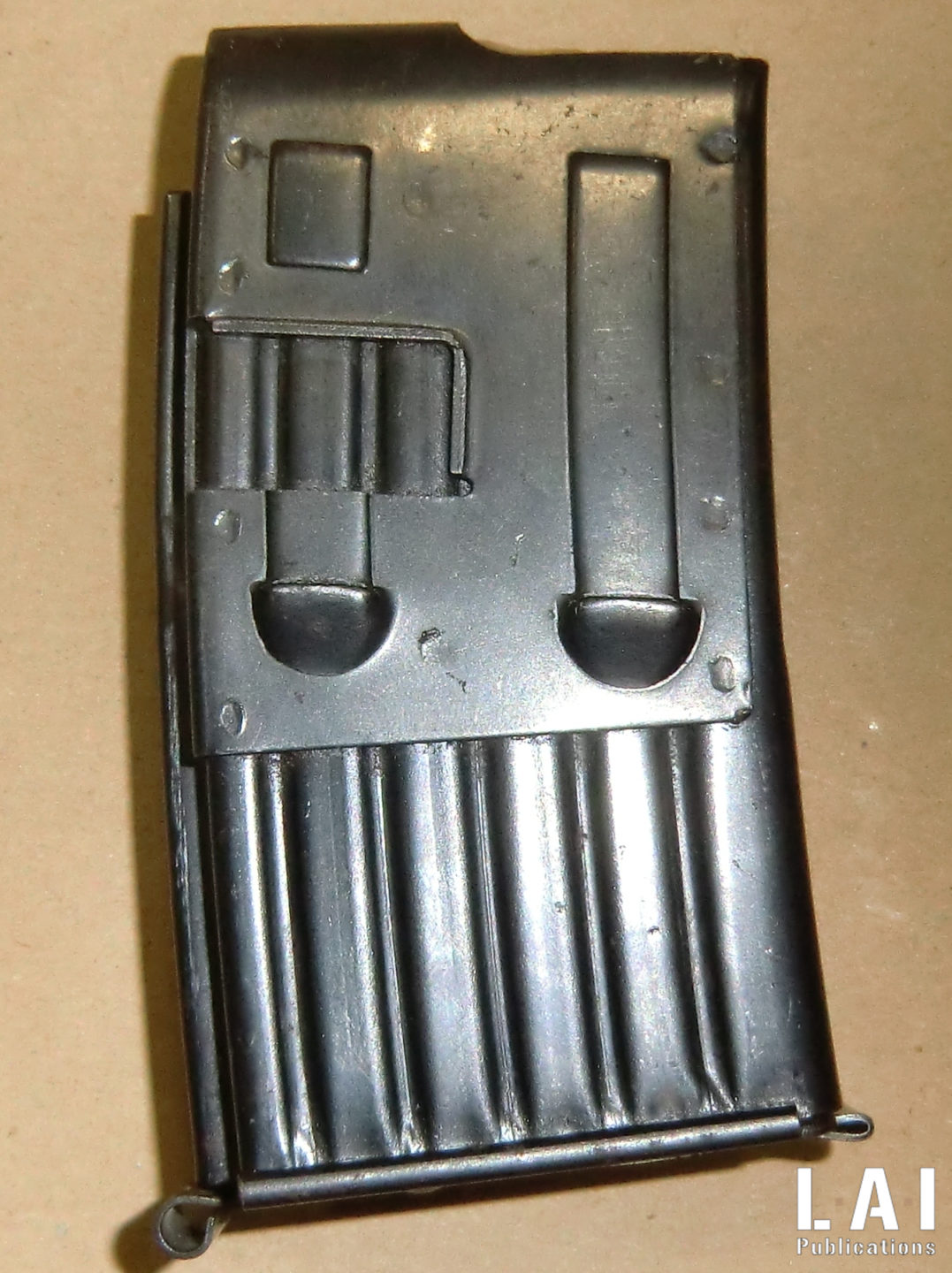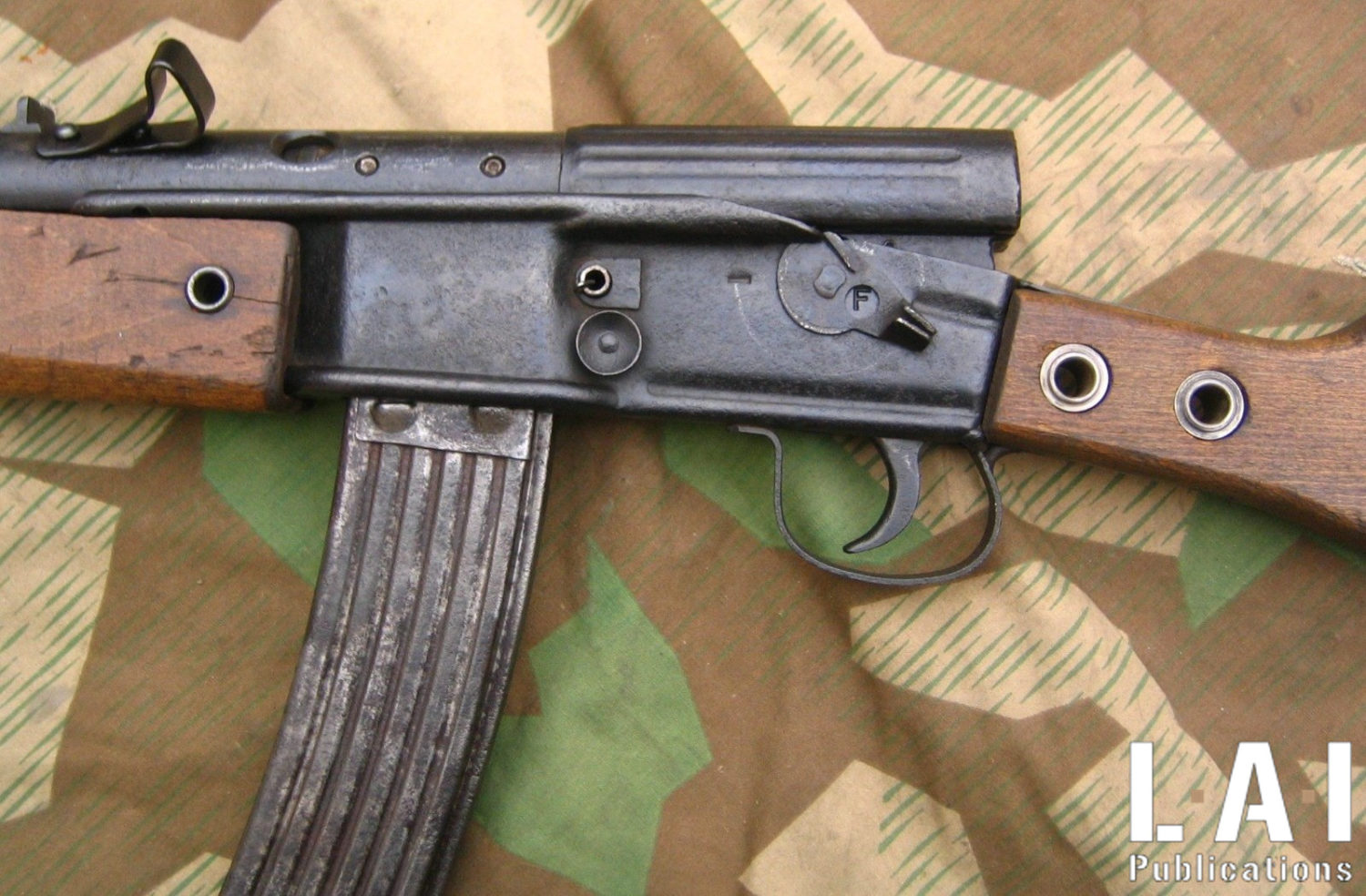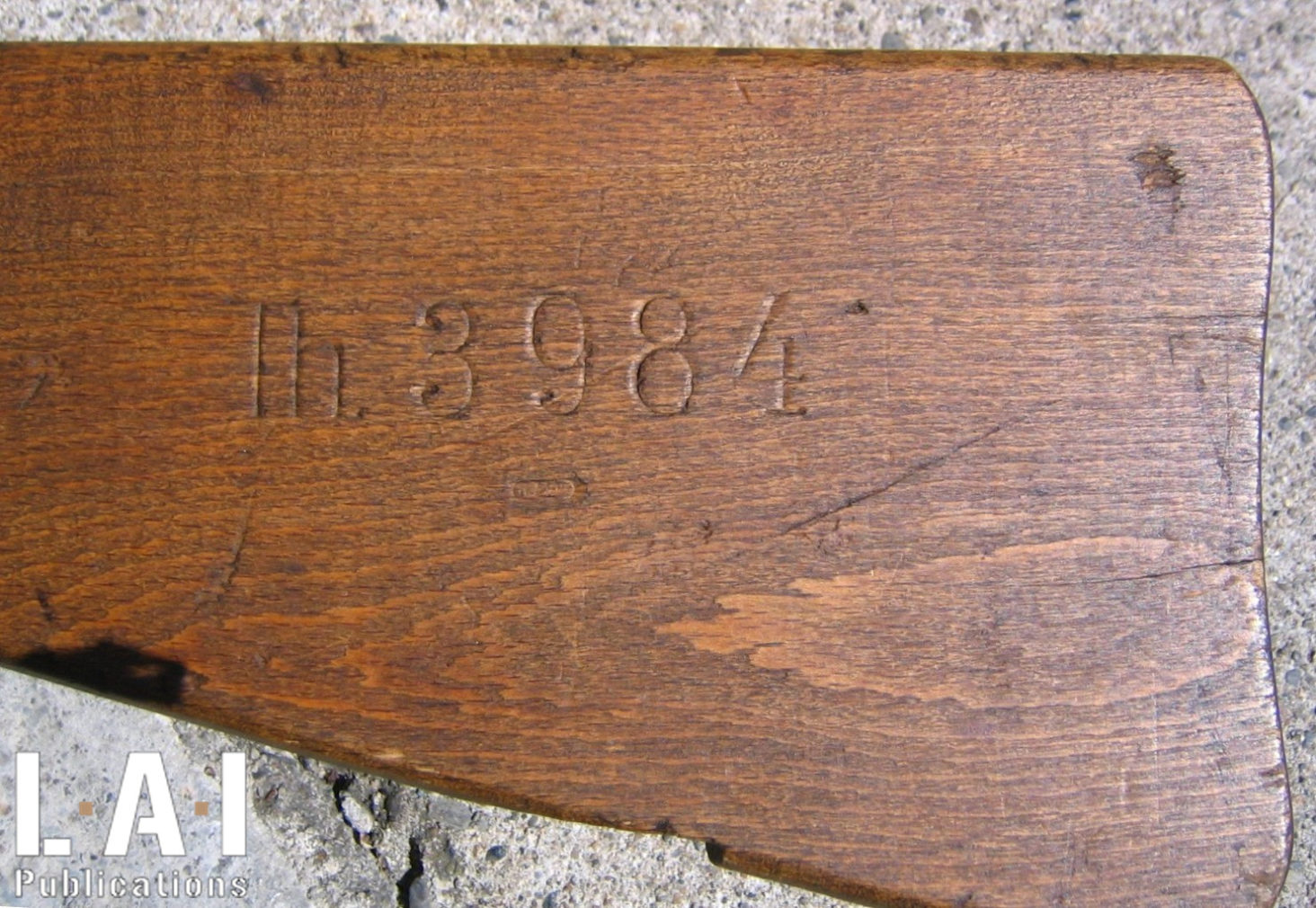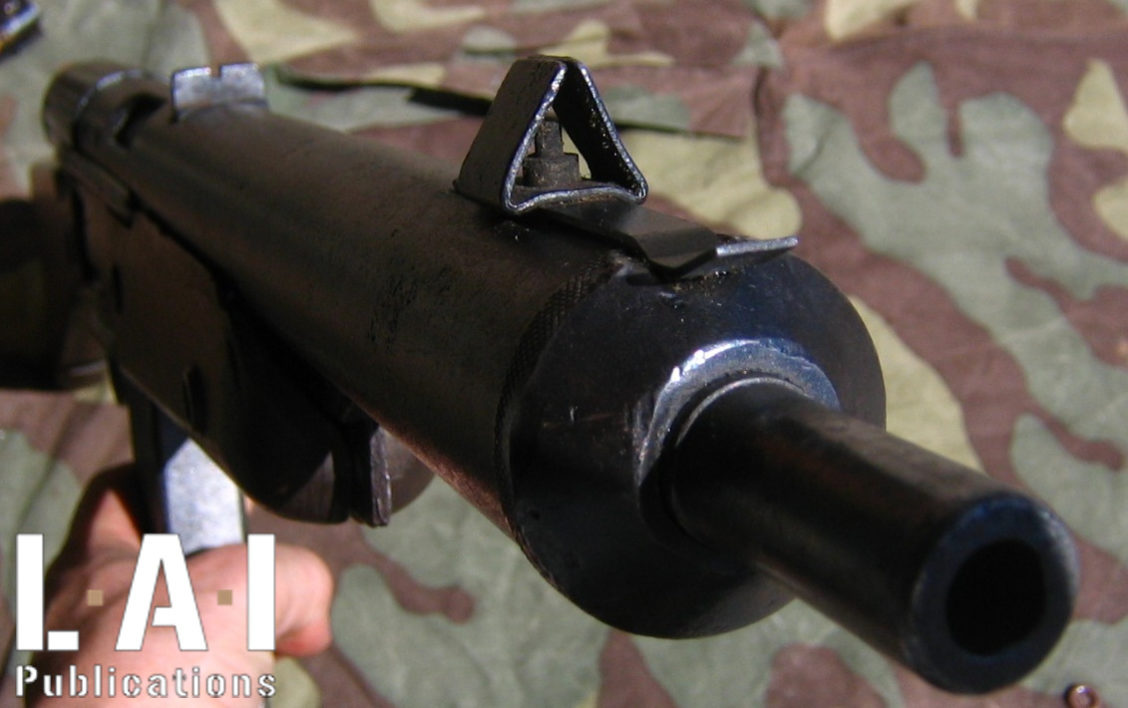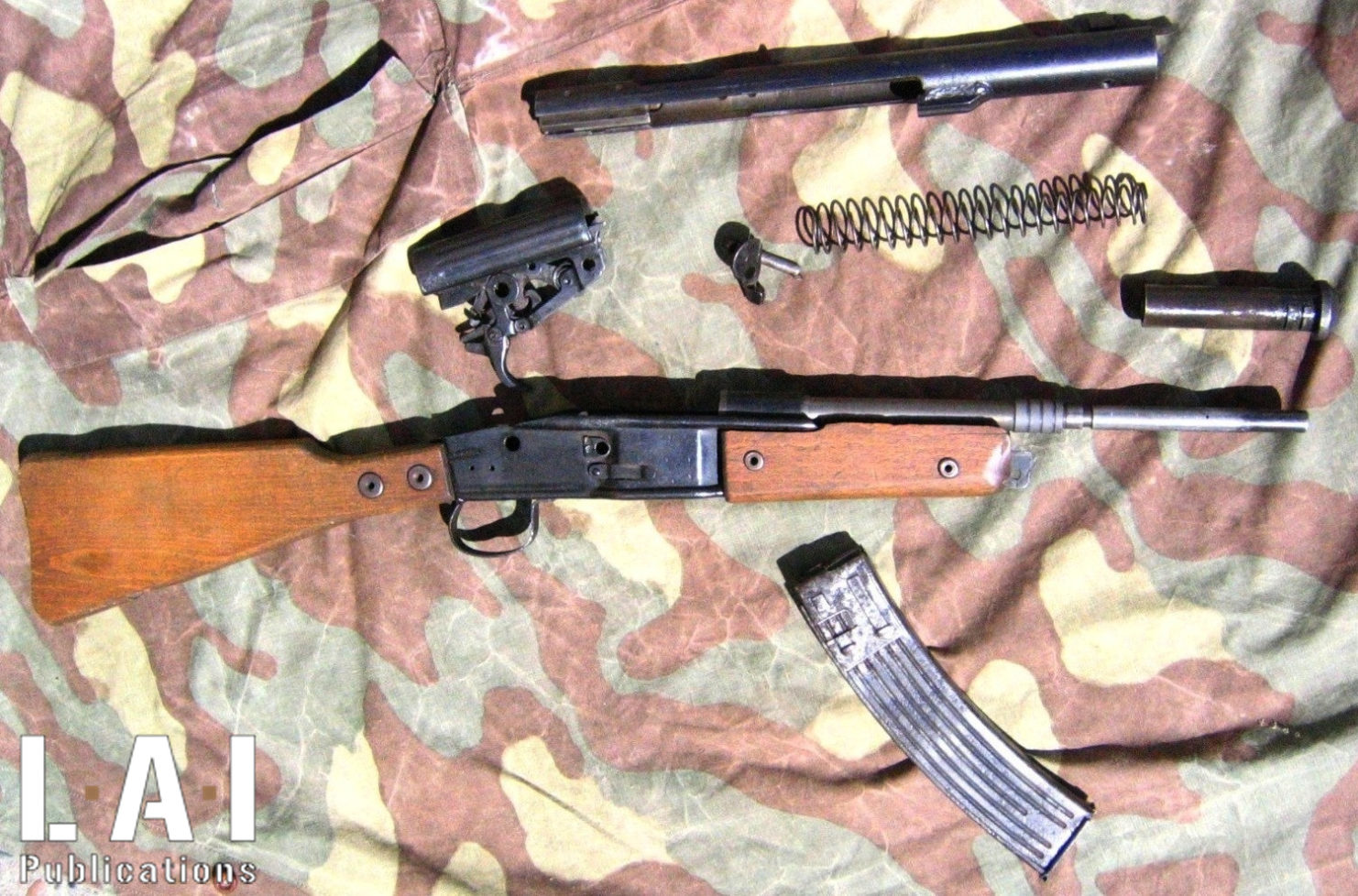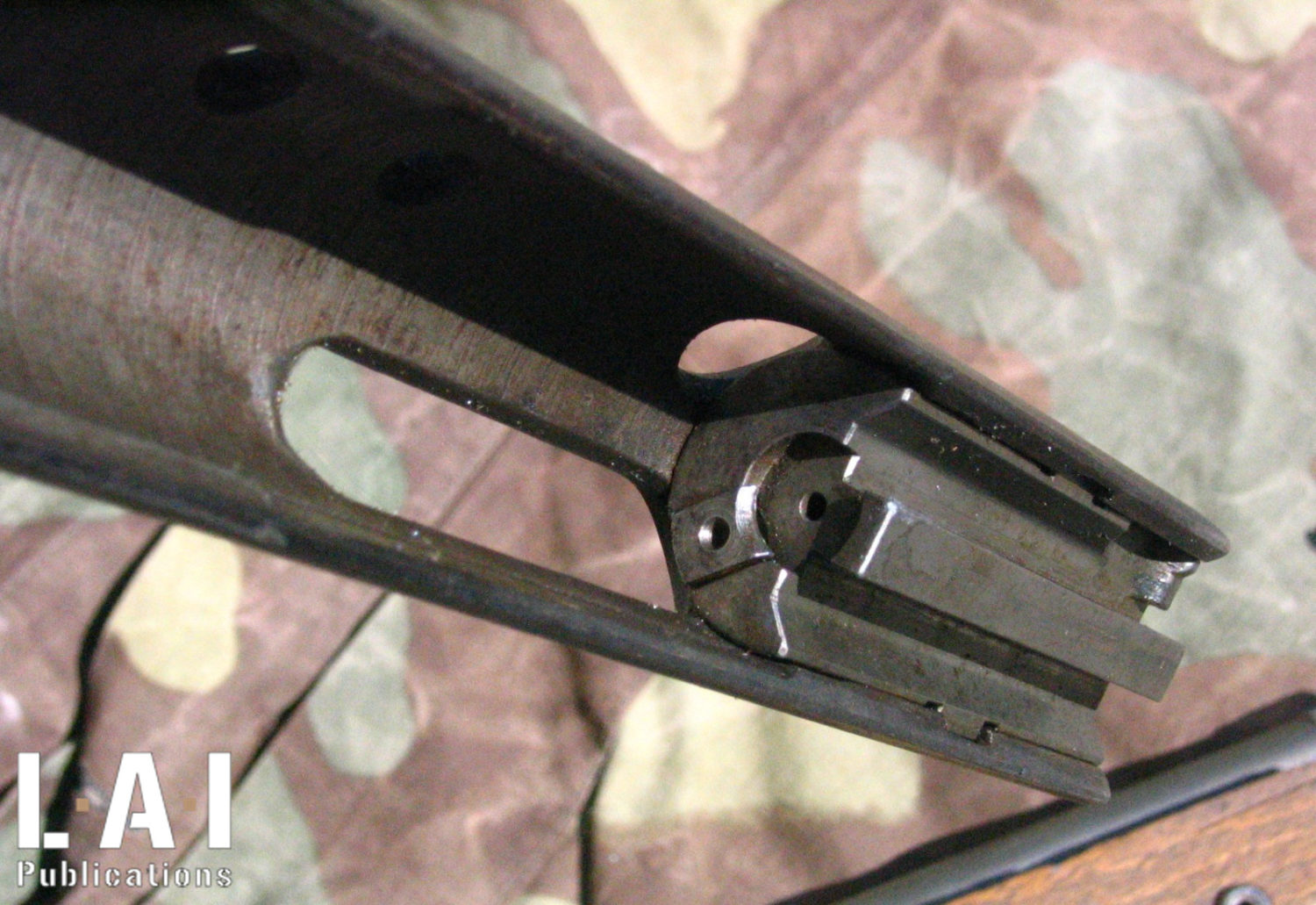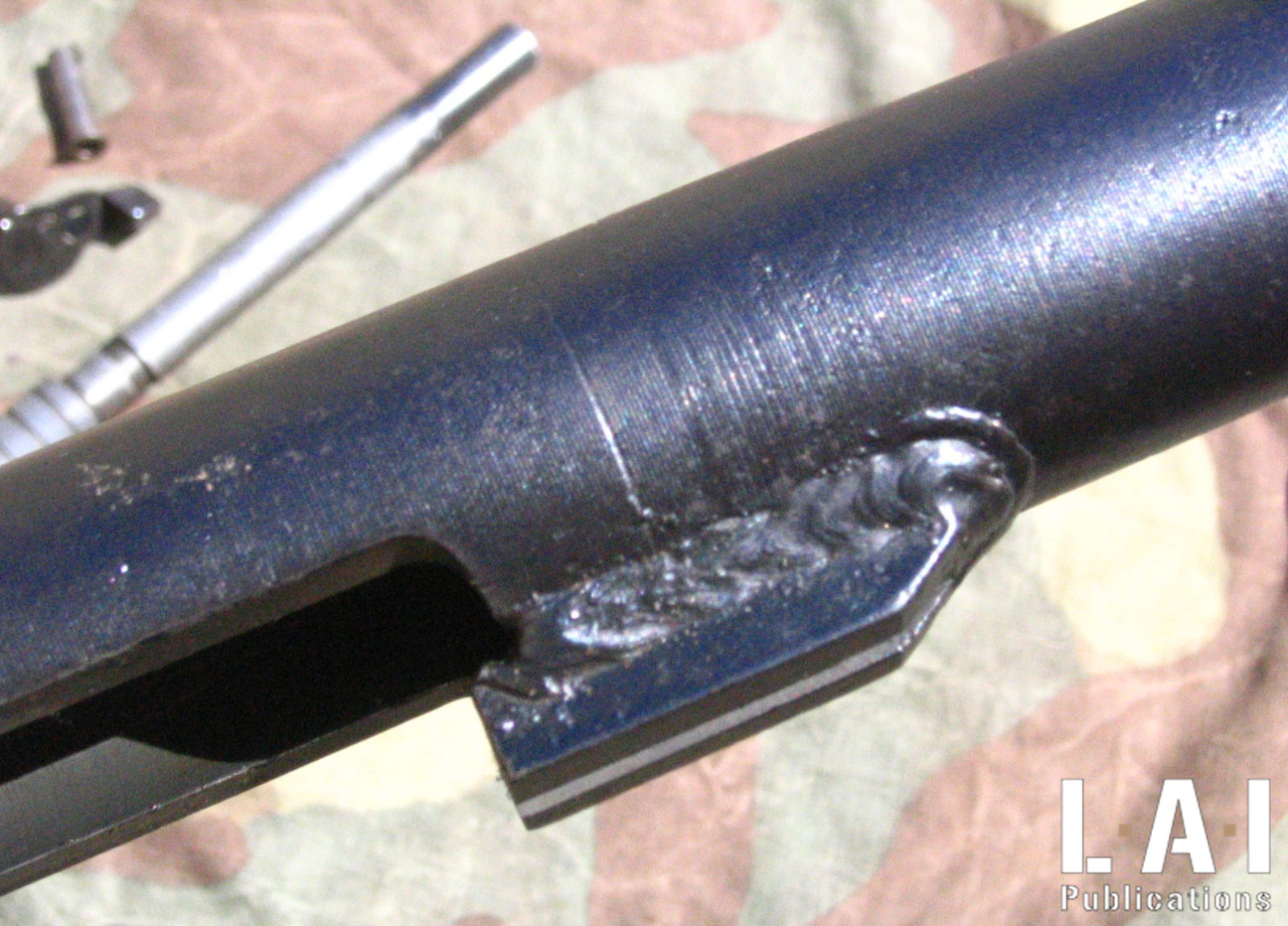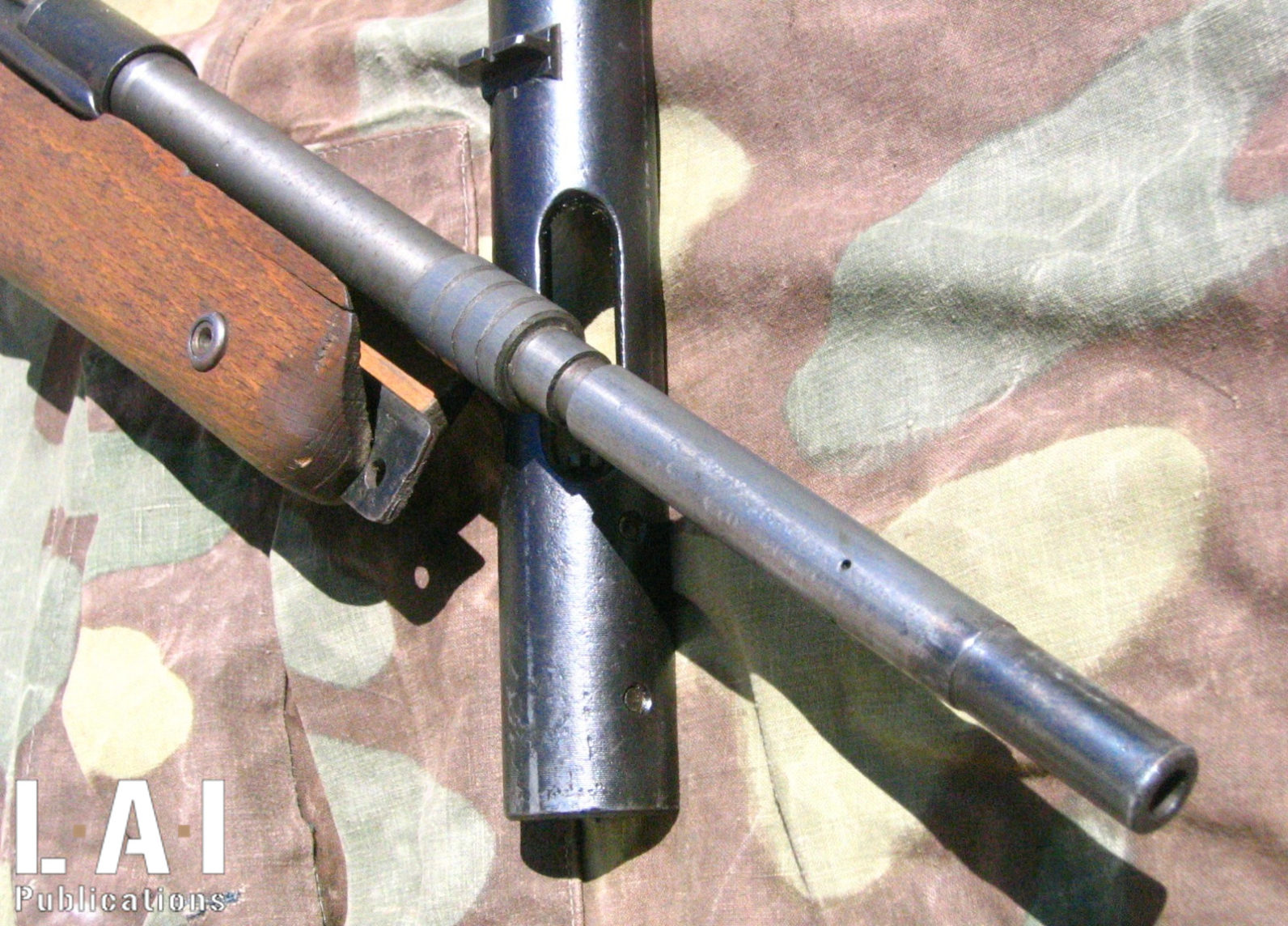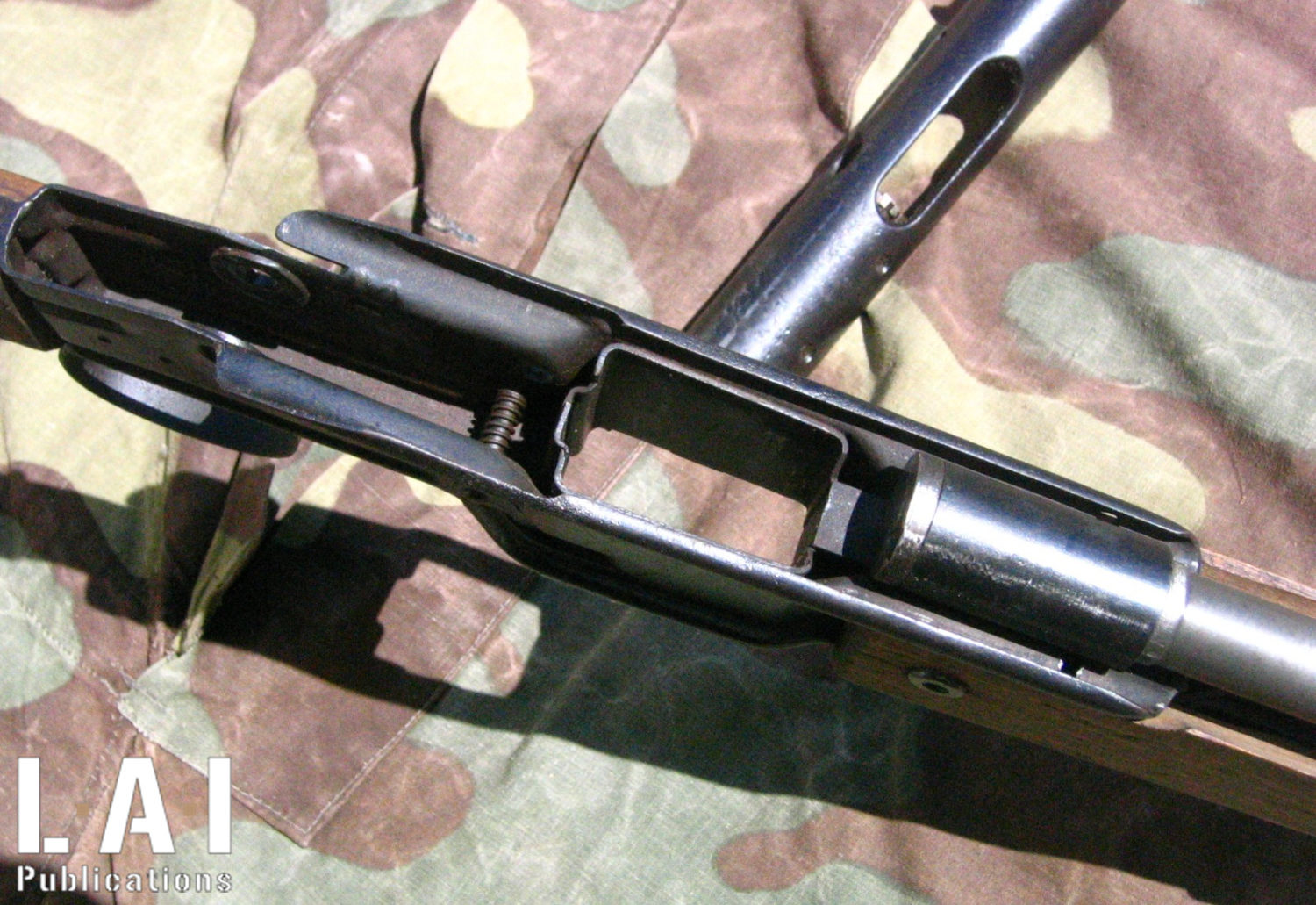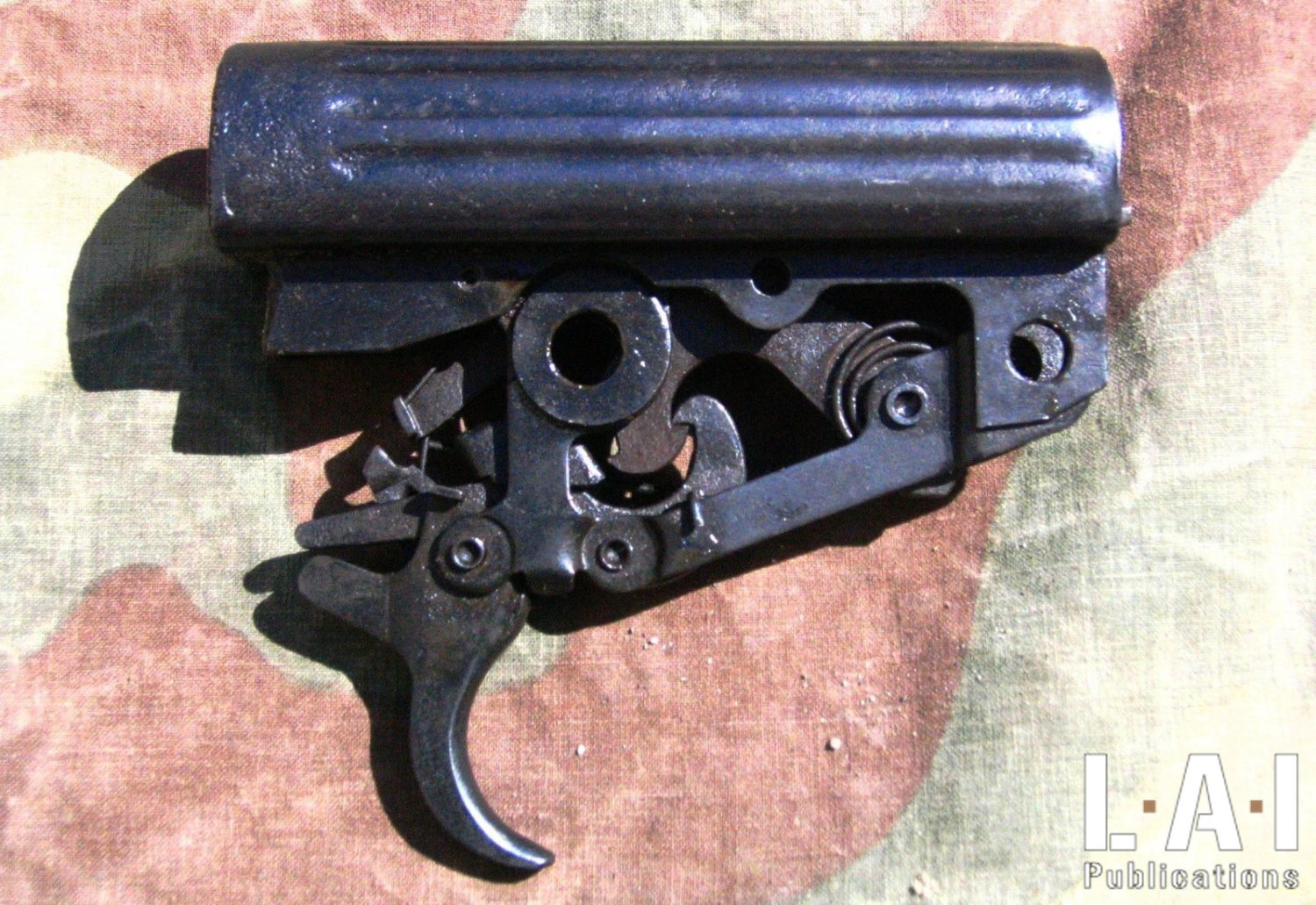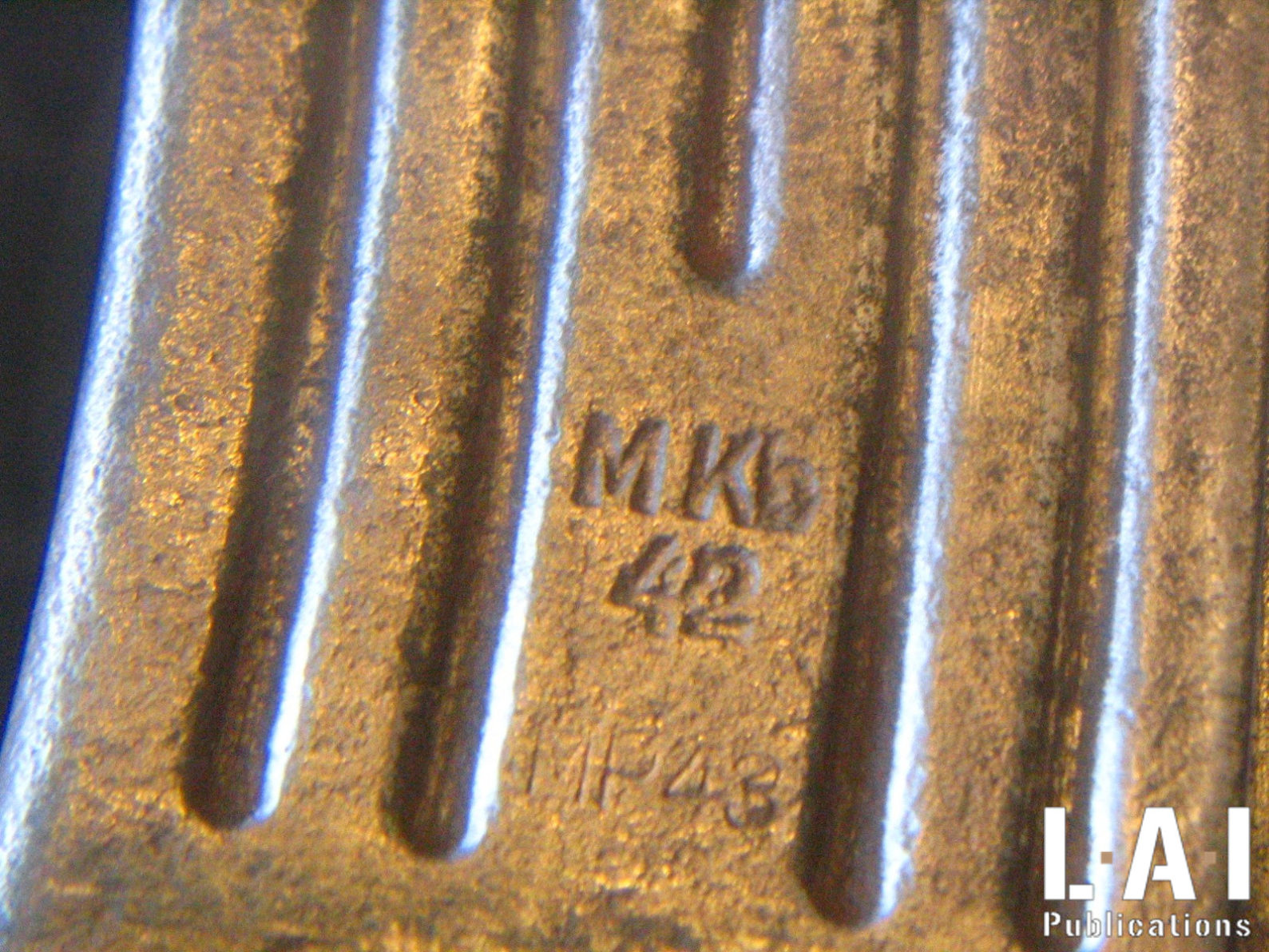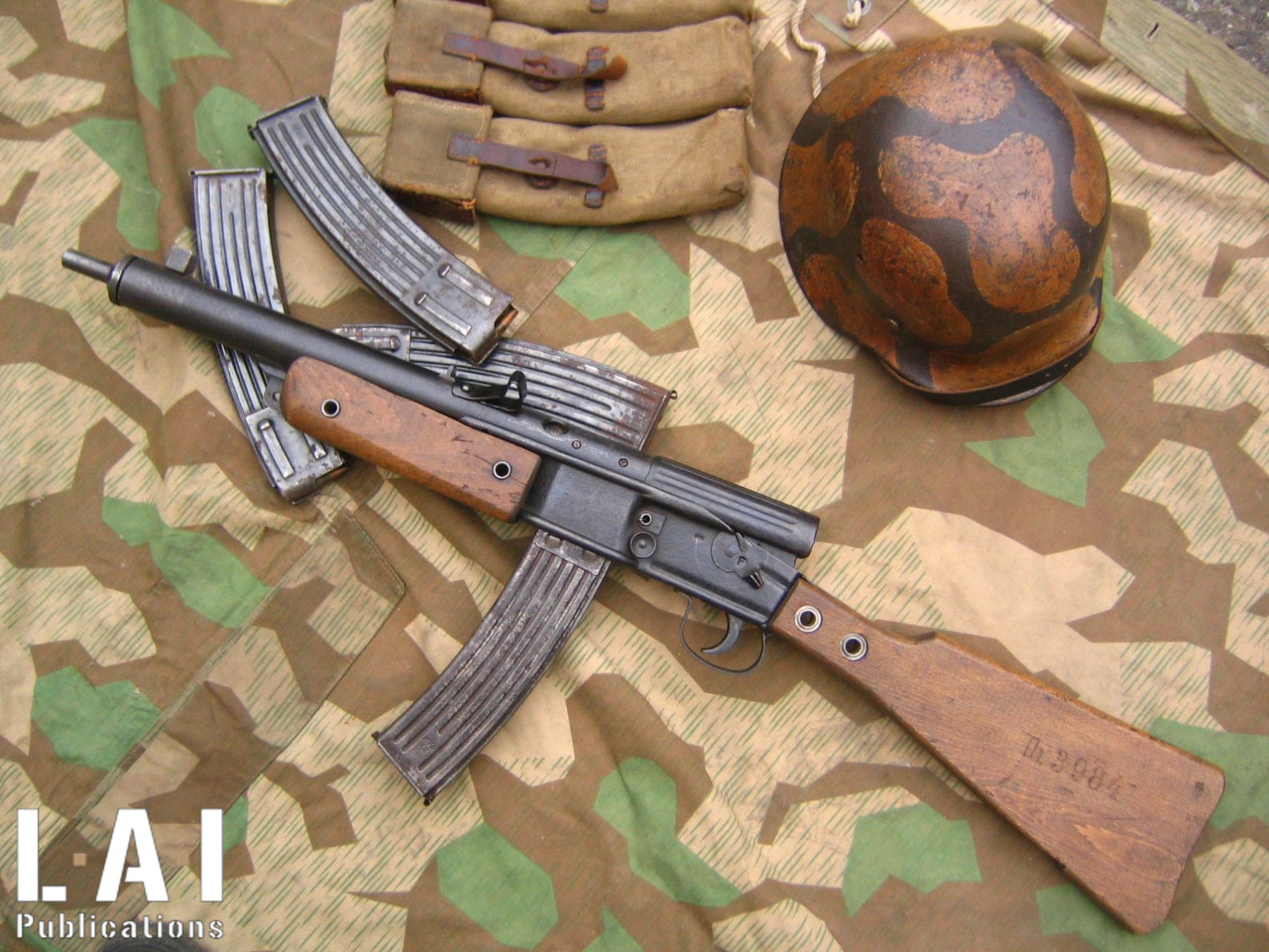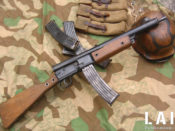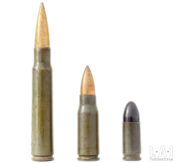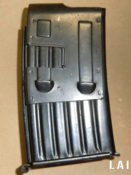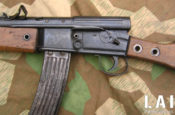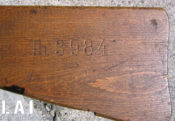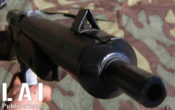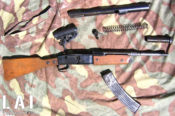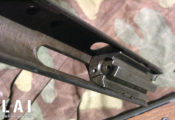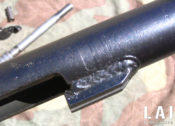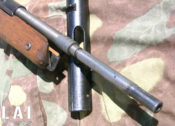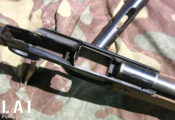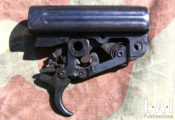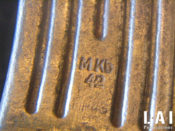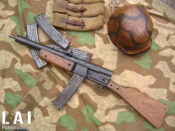The Gustloff Volkssturmgewehr rilfe

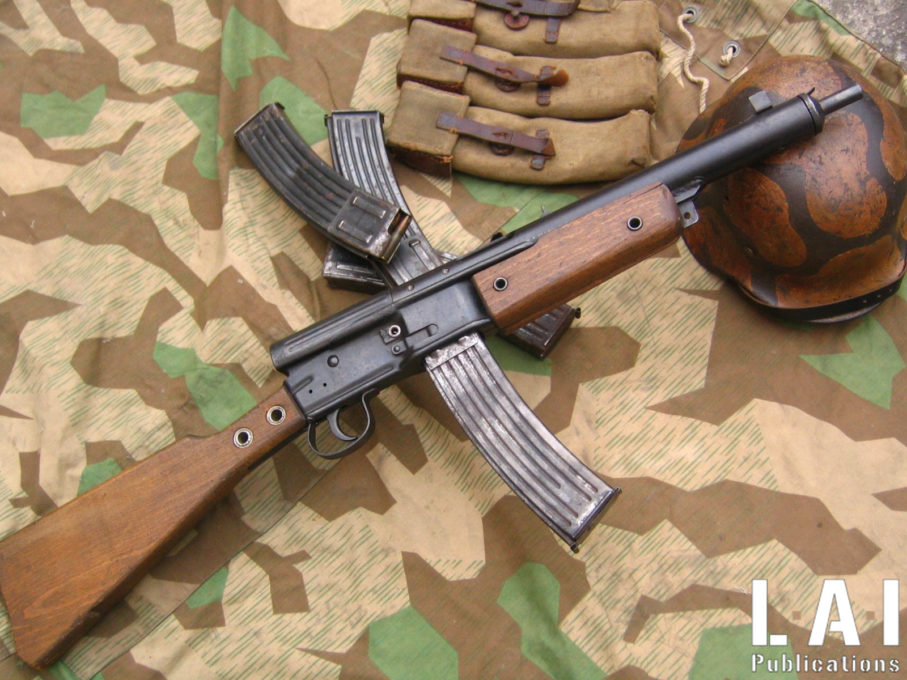
In the beginning of 1945, a whole series of so-called “necessity” weapons appeared in the hands of the German fighters of the Volkssturm (a fighting unit made up of old men and young men hastily armed in an effort to try to stem the advance of the Anglo-Americans in the west and the Soviet steamroller in the east). These weapons were built in a very simple way in heavily damaged arms factories or assembled from spare parts or even manufactured under contract by other workshops not producing weapons at first. Thus, aeronautical and maritime combines such as Blohm und Voss in Hamburg or famous cutlery manufacturers such as Karl Eickorn in Solingen produced simplified submachine guns more or less inspired by the British STEN. Firms like Erma even designed a submachine gunSubMachine Gun More in 9×19 mm, the EMP-44 (not to be confused with the StG-44) mainly made of welded tubes.
Background
As time passed, the situation deteriorated, necessity became law; the ingenuity of those responsible for German industrial production under the leadership of the Minister of Armaments Albert Speer then reached its climax. If this feat had not been possible without the employment of a slave workforce made up of deportees, one could regard the creations of this period as exemplary in many respects.
The Gustloff Werke (Gustloff Factory) in Weimar in central Germany had extensive experience in armaments since it was the result of the dismantling of the Simson factory. During the years 1925-1930, it specialized in the manufacture of P.08 and had produced Gewehr 98 rifles in large numbers during WWI in its Suhl factory.
Gustloff’s chief-designer, engineer Karl Barnitzke, had developed during WWII a simplified assault rifleAn assault rifle is a weapon defined by the use of an "inter... More firing the mythical 7.92×33 Kurz cartridge dedicated to the Sturmgewehr: the MP507. In November 1944, his weapon was submitted to the approval of Adolf Hitler who, wanting to control everything, hastened to reject it because it was too similar to the Sturmgewehr 44. It was not until January 1945 that the production of the weapon was relaunched in a simplified version (without the automatic mode firing mechanism) to equip the Volkssturm. Nevertheless, the weapon was planned to be equipped with a magazine limited to 10 rounds on the express order of the Führer who probably considered that his people’s militia did not have a life expectancy greater than the time needed to empty the magazine; in any case, the production of Sturmgewehr cartridges was no longer sufficient for the needs of the army.
The only semi-automatic “assault rifle” for the Volkssturm was born. Let us specify here that the name we will use here is that of “Gustloff Volkssturmgewehr“, used by W. Darrin Weaver in his excellent book “Desperate measures: the last-ditch weapons of the Nazi volkssturm”. The latter specifies why the name “VG 1-5” sometimes used, is probably the result of an error and in this case has no historical legitimacy, contrary to the name “Gustloff Volkssturmgewehr” used during wartime in correspondence.
When the situation deteriorated further towards the beginning of 1945 each Gauleiter (leader of the administrative division called “Gau”) was given increased powers and charged with organizing the manufacture of means of defense at the local level. Thus, Fritz Sauckel made the best use of the resources of his Gau of Thuringia by having about 10,000 samples of the model manufactured at Gustloff. It should be noted that this is indeed the individual nicknamed the “slavemaster of Europe”, who was responsible for Labour Deployment and the deportation of hundreds of thousands of young people from Europe to German factories. He was sentenced to death and hanged following the Nuremberg Trials.
The weapon was only produced for a few months. It has become extremely rare nowadays: in his book W. Darrin Weaver has spotted only 27 surviving copies around the world.
The recent discovery of a 28th copy serves as a support and pretext for this study that will try to describe and analyze this venerable piece of industrial archaeology, one of the last avatars of the unbridled arms race that characterizes the military industry of a falling 3rd Reich.
The serial number “Th. 3984” that we can observe on our sample is in very good condition. It is only stamped on the left side of the stock which consists of a simple board, cut and riveted to the frame. The prefix letters “Th.” identify the Thuringian “Gau”. No controller, test or manufacturer hallmark is worn on the weapon: this lends credence to the thesis of an emergency manufacture in the last weeks of the war. The only marking apart from the serial number are the letters “S” and “F” at the safety lever. We found this weapon equipping battalions on the Oder front, far from Thuringia, which seems to support the thesis of a relative diffusion of the weapon. We note the absence of its sling which consisted only of a gas mask strap nailed to the butt and held at the front by a simple triangular scrap hook. Similarly, after many decades of good and loyal service, the rivets of the cocking handle were missing. They have therefore been replaced.
Description
With a weight close to 5 kilos, this semi-automatic rifle operates from gas-delayed blowback, which is quite surprising in terms of assault rifleAn assault rifle is a weapon defined by the use of an "inter... More operation.
The designer thus counted on a delay in the opening of the bolt first induced by its massive weight and then assisted by the gases action to counteract the recoil initiated by the shot. In this rear movement, the bolt is also dampened by a powerful recoil spring.
When fired, the bolt immediately moves backwards. The difference in mass between the bolt and the bullet implies that the speed of the bolt is proportionally inverse to that of the bullet. A few centimeters from the muzzle, the barrel is pierced by 4 peripheral gas ports arranged at 90° from each other. When, pushed by the gases from the combustion of the powder, the bullet passes beyond these vents, the gases invade the chamber constituted by the sleeve that surrounds the barrel. The pressure of the latter helps to slow down the rear movement of the bolt by leaning on the front part of the sleeve. Probably developed by dint of mathematics and experimentation, the positioning of the 4 vents must correspond to the place allowing the best “timing” as to the opening of the bolt of this important mass. After the bullet has left the barrel, it is on the inertia of this massive bolt that the semi-automatic cycle is accomplished, generating the extraction, the ejection by meeting the case on a fixed element of the frame (part of the trigger mechanism), and the armament of the hammer. At the end of the stroke the spring then brings the bolt forward by introducing a cartridge into the chamber, the cycle can then begin again.
The weapon is built using as much stamped sheet metal as possible, riveted and welded. Thus, the frame and the firing system make massive use of these technologies. The bolt and its sleeve come from machined parts just like the barrel, of course. The firing system is very similar to that of the StG-44 and G43.
The operation of the weapon is rather common compared to current standards. A sheet metal cocking handle is riveted to the left side of the bolt close to the ejection port. If the cocking is possible by manually operating the bolt by the sleeve, the thing seems very perilous on a weapon having fired even a single magazine at high rate … unless you wear good gloves! There is a safety lever on the left side of the weapon, as on the Strumgewehr. It therefore has two positions “S” probably for “Sicherheit” and “F” probably for “Feuer”. Note the care taken to make these letters appear inside an opening of the lever according to its position. If this refinement seems out of step with the context of the weapon, we can note that it must not cost much to produce! When security is engaged, it hinders the hammer making it impossible to strike the firing pin. The magazine catch has its button on the left side of the weapon and its lock on the right side… here too, as on the StG-44. On an early version visible in W. Darrin Weaver’s book, the magazine catch was simply a leaf spring arranged on the right side of the weapon. An ultimate simplification certainly, but probably at the prices of prohibitive defects such as the untimely stall of the magazine.
The sights are reduced to their simplest expressions: of an open sight type, it only allows direction adjustment (at the factory!) by sliding the rear sight on its dovetail. The weapon isn’t designed for accuracy purpose…no doubt about this! The front sight is still “protected” by two metal-sheet ears. On our sample, these had ended up bending on the front sight generating a strange tunnel of triangular section impractical to use… they were straightened, of course.
The disassembly is obviously done around the specificities of the weapon, namely that the bolt and its sleeve encompass the barrel. One starts with the removal of the bolt sleeve, which keeps the recoil spring under tension. To do this, we lift the leaf spring acting as a stop for the sleeve and turn it a quarter turn. Unlocked, it slides forward and releases the recoil spring. The trigger mechanism and bolt can then be disassembled. The trigger mechanism is separated from the frame by removing the selector and a quick detach pin (similar to that of a StG-44, but also a G3 or FAMAS) located above the button of the magazine catch. To remove the selector, after compression of its upper part acting as a stop spring, the “F” position is overridden in an anti-clockwise rotation, which allows its extraction from the left. The trigger mechanism can therefore be extracted from the frame, carrying with it the rear part of the bolt. Thus, the bolt is disassembled from the barrel and can be extracted from the weapon forward. The thing is curiously reminiscent of the bolt disassembly of a Walther PP … The magazine, actually coming from a StG-44, is easily disassembled: the metal tab located at the front of the floor plate is lifted and the latter is slided forward. From there, one must pay attention to the sudden decompression of the magazine spring.
No additional disassembly seems to be planned, as a large part of the assemblies are carried out by means of non-removable rivets or welding. This is not surprising given the purpose of the weapon. Nevertheless, the field disassembly is quite easy and the accessibility for cleaning is rather good… always a positive point for a weapon of war.
In conclusion
The brilliant operating system of this assault rifleAn assault rifle is a weapon defined by the use of an "inter... More was only marginally used on other weapons (including the HK P7 and Steyr GB pistols). As time was of essence to stop the invasion, it was necessary to make it simple and effective, which was perfectly successful with this brilliant model, its generalization in the hands of seasoned troops could have made the task infinitely more difficult for the allies. Still, it would have been necessary for the supply of ammunition to follow, and also that logistics had not been in such a bad shape. But it is important to emphasize here that this type of weapon can only be born in such circumstances… rejoice that the course of this war has not been reversed!
Gilles Sigro-Peyrousère
This is free access work: the only way to support us is to share this content and subscribe. In addition to a full access to our production, subscription is a wonderful way to support our approach, from enthusiasts to enthusiasts!
Technical data:
Caliber: 7.92×33 Kurz
Length: 882 mm.
Barrel length: 374 mm.
Empty weight without the magazine: 4.25 Kg
Capacity: removable 30-shot magazine (same as the Sturmgewehr)
Operation: semi-automatic by gas-delayed blowback
Identified and known numbers in collections.
101,Th.1135, Th.1185, Th.1430, Th.1839, Th.2157, Th.2343, Th.2574, Th.2661, Th.3512, Th.3671, Th.3770, Th.3984, Th.4158, Th.460, Th.5672, Th.6545, Th.7011, Th.7221, Th.8034, Th.8493, Th.8859, Th.8953, Th.9198, Th.9307, Th.9469, Th.9464, Th.9901.
Sources:
Author’s collection.
Bibliography:
« Desperate measures: the last-ditch weapons of the Nazi volkssturm » par W. Darrin Weaver, édition Collector Grade Publications Incorporated (2005)


